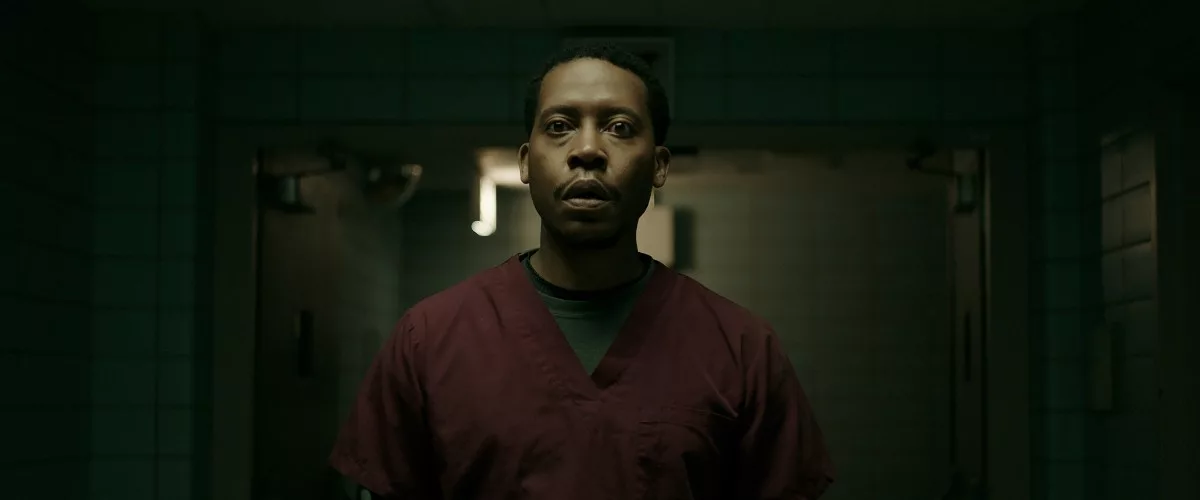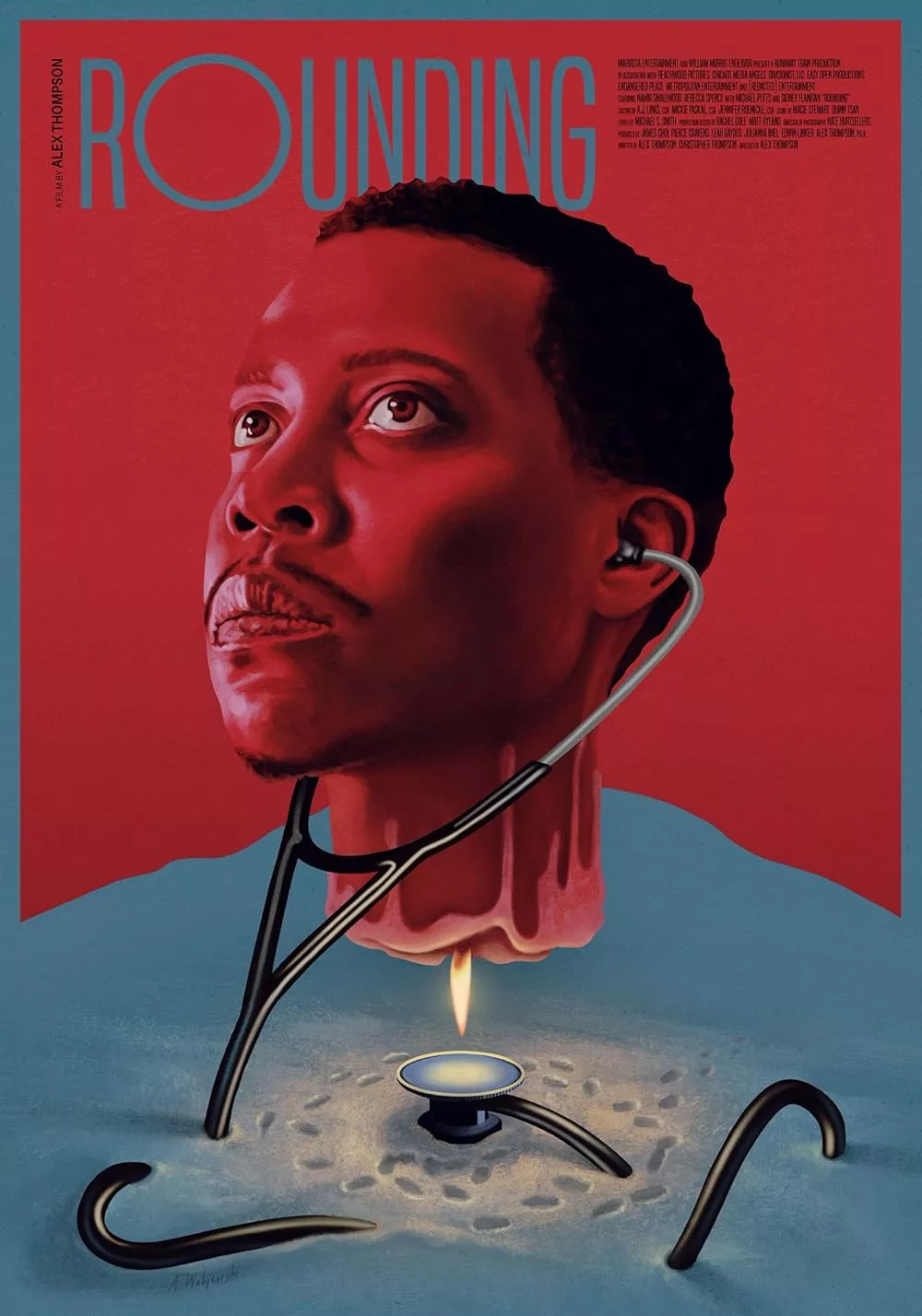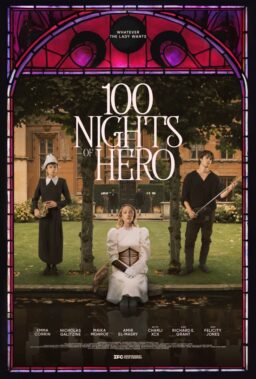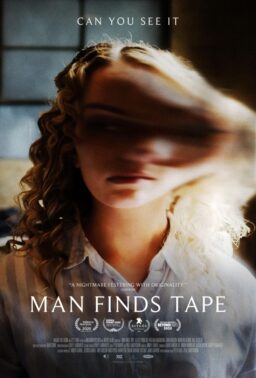Alex Thompson and Kelly O’Sullivan have collaborated on two films, 2020’s “Saint Frances” and last year’s “Ghostlight,” which the pair co-directed. O’Sullivan wrote both scripts and played the lead role in “Saint Frances.” Thompson and O’Sullivan are a Chicago couple (O’Sullivan went to Northwestern and is an alumna of the School at Steppenwolf), and both “Saint Frances” and “Ghostlight” come out of the vibrant Chicago theatre scene, featuring excellent Chicago actors. In between “Saint Frances” and “Ghostlight,” Thompson directed “Rounding,” co-written with his brother Christopher Thompson. “Rounding” toured the festival circuit in 2022, three long years ago, and is just reaching us now.
When medical student James Hayman (Namir Smallwood) moves to the small rural town of Greenville to complete his residency, he does so in a state of severe duress (so severe it might have been wise to take some time off). He had some major collapse following a lack of judgment at his big city hospital job and is still skittish, haunted by guilt and regret. He arrives in Greenville in the dead of winter, where there is not a glimpse of green in sight. James takes punishing daily runs through the icy landscape, a lonely figure surrounded by snow (Nate Hurtsellers’ cinematography is superb.) James doesn’t really bond with his new co-workers (one of whom is played by O’Sullivan), and James’ new boss (Michael Potts) has to remind James repeatedly that a small rural hospital is different from an urban hospital. Bedside manner is everything, and James’ bedside manner is terrible.
Then 19-year-old Helen (Sidney Flanigan of “Never Rarely Sometimes Always“) is admitted with a severe asthma attack. She’s been hospitalized repeatedly, and her condition is so severe her mother put her on a list to get a lung transplant. James becomes obsessed by Helen’s “case”. Something’s not right about the whole situation. Something’s “off” with the diagnosis, and something’s definitely “off” with Helen’s mother (Rebecca Spence). James wants to get to the bottom of it, but his “meddling” is unwelcome. Helen is not his patient and it’s not his business. But he can’t let it go.
Explaining these details doesn’t explain “Rounding”. On paper, “Rounding” sounds like an episode of “Grey’s Anatomy” or “E.R.,” and in reality it is. However, all these other things—concepts and symbols—are placed on top of the hospital scenario, and the result feels scattered and incoherent. James’ attention is caught by a series of creepy pictures hanging on the walls at the hospital, depicting demons and mythological creatures. There are also crosses on the walls, and we learn early on that James’ cross necklace, given to him by his mother, is broken and he hasn’t gotten it fixed yet. At one point, James sees Helen levitating in the hallway, her body bent over backwards (calling to mind the identical moment in the great “Saint Maud“). James gets a glimpse of a horrifying multi-headed monster at the end of a dark hallway, a monster who has it in for him specifically. Is James seeing things? Obviously. But what, and why?
“Rounding” opens with somber onscreen text describing how the first doctor in ancient Greece was also the son of Apollo, and this deity-physician would “visit” his patients in a hypnotic dream-state known as “enkoimesis”. The text onscreen that follows: “Today there are no Gods in medicine and the process of visiting patients is known as rounding.” This gives a glimpse of the heavy load of symbolism in “Rounding,”,where a doctor “making his rounds” is steeped in ancient myth and religion. These concepts don’t gel together in a satisfying way, and therefore the ideas don’t take flight.
The most effective parts of “Rounding” are the most everyday: scenes showing the rhythms of a smalltown hospital, the lived-in decor of James’ rented rooms (the chandelier shaking with the footsteps of the upstairs neighbor), and the class James is forced to take to improve his bedside manner, where the students have to do acting exercises. In these moments, particularly the acting class (so reminiscent of “Ghostlight”), Thompson is on familiar ground, and it shows.
James is an intriguing character. His life is a waking nightmare, the dark version of the supposedly healing endosmosis. Smallwood, a riveting actor, is in every scene, and he plays everything at a fever pitch. Smallwood draws you into the experience. “Rounding” needs him. Also intriguing is Helen, who recognizes James’ interest in her, and makes steadfast eye contact with him, almost like she’s dying to tell him a secret.
“Rounding” doesn’t quite make its own case, in terms of the symbolism it throws into the mix, but as a portrayal of a man falling apart from overwhelming stress it works quite well.
In limited release now.




















